Turn your Selfies into Professional Business Headshots -
Create Your Headshot 👩🏻💼👨🏻💼
To make sure you get enough credit, you have to add an attribution link and make sure they are clearly visible on every page where they are used (you can't even use them in an email). Here are some alternatives that don't take away credits when using their photos.
Are you ready to be the next big thing on the internet? Of course, you are! If there's one thing that you're planning to do when your name goes viral, it's probably going to be to use a gorgeous stock photo on your homepage or website.
To make sure your website pops, you must choose the best stock photos that will work perfectly with the colors and tone of your site so that people will get excited about what your business has to offer from the very first time they see it.
Image Optimization is preparing a photo for publishing online; for viewing via a web browser or mobile device by making sure its appearance and file size meets best practice standards.
Creating a truly optimized image means more than just uploading your photos to a sharing site like Facebook, Twitter, or Instagram without any modifications it's about saving an image in your desired format so it displays at its very best on every platform while taking advantage of all available tools and functionality offered by editing apps and digital asset management systems.
To create an optimal image, we recommend using Adobe Photoshop, GIMP, or Affinity Photo as these three editors offer large collections of plugins and extensions you can use in conjunction with their extensive toolset.
In recent years, Upscale Stock Photos has gained popularity, and many entrepreneurs have started using it. Still, there are other stock photography websites out there that are worth trying as well.
Here’s a list of some good alternatives to upscale stock photos. Some of them aren’t free and some aren’t super cheap, but they all have their pros and cons, so take a look and decide which one will work best for you!
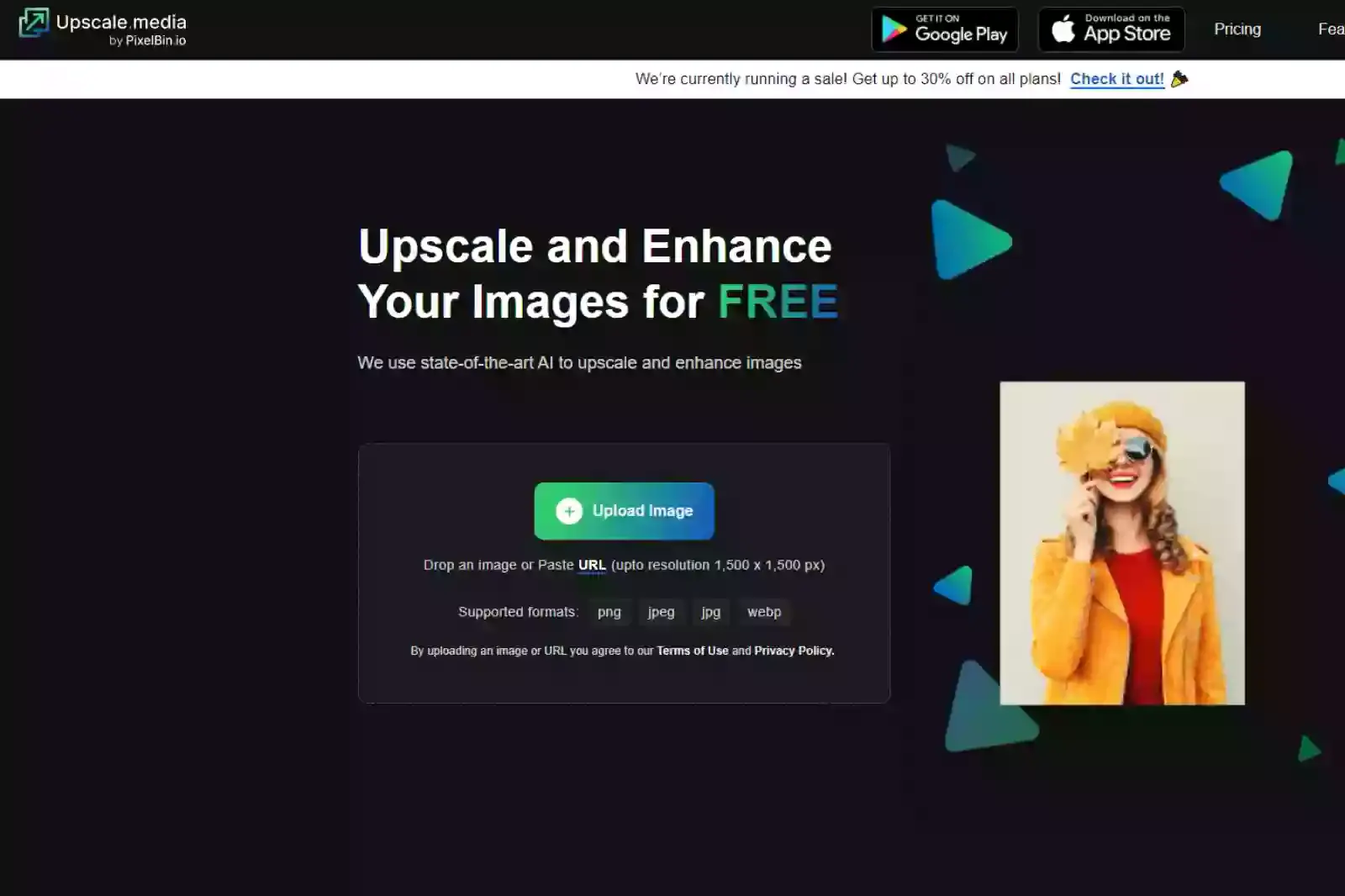
Some of you may have heard of them and others might not, but at least check it out; they take submissions from aspiring photographers. Now, of course, it's important to note that you aren't guaranteed a spot on their site and can also get some low-quality photos sent back as well.
I t is worth checking out, though. If nothing else, it's an excellent source of practice shots. You can submit your work or see if any other photographers in your area would be willing to work with you.
Either way, it’s something worth looking into if you want a chance at getting paid for your photography skills (and who doesn’t?). Plus, if your photo is accepted, it will look great on your resume or website.
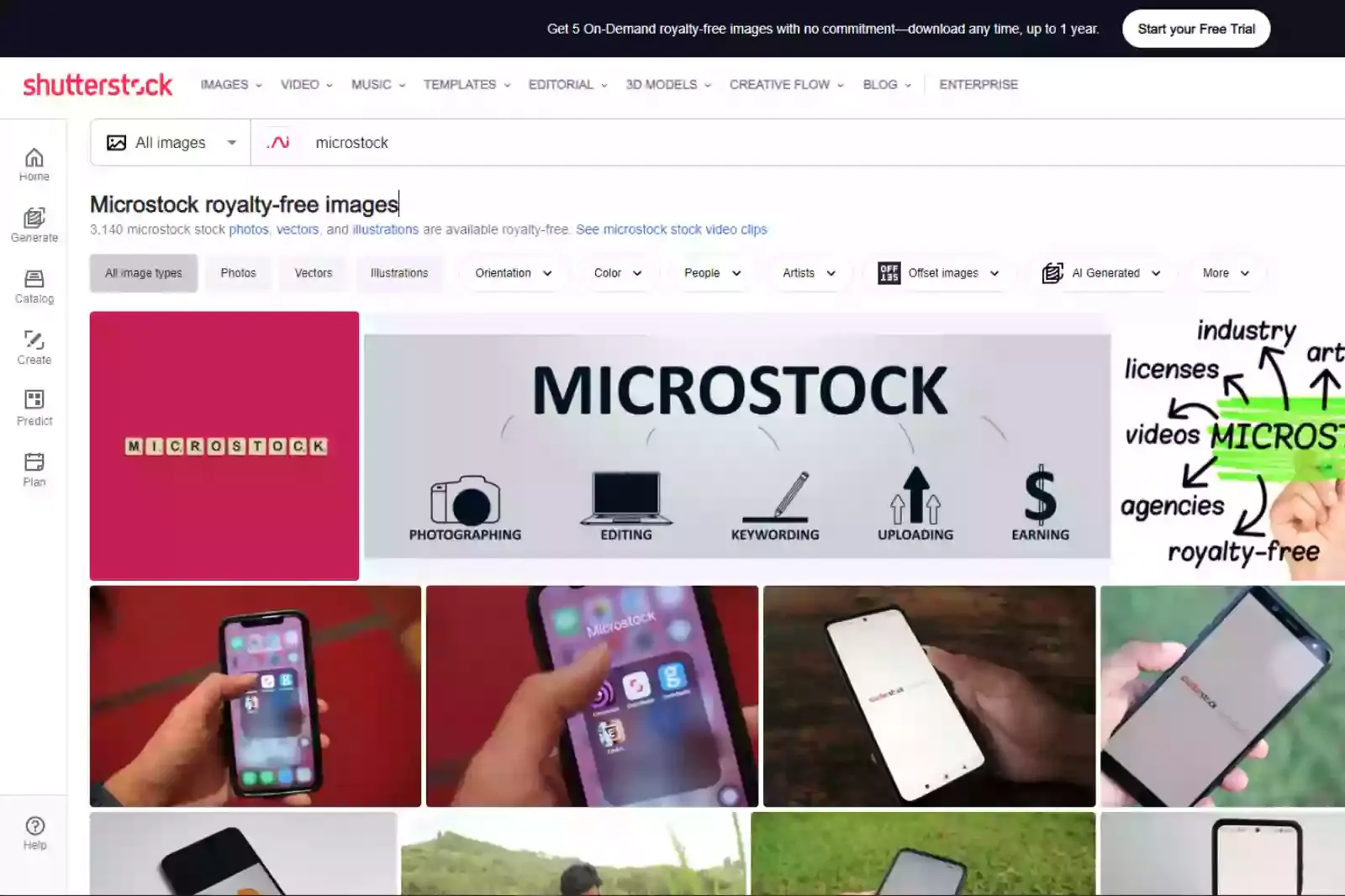
When it comes to cheap stock photos, the microstock photo is tough to beat. While they don’t have a large library, they do boast a very low price point and some free pictures.
They also accept submissions from all photographers, so if you want your photos on thousands of websites around the world, here’s one place where you can start. And if you sign up for an account now, you even get your first three images for free so what do you have to lose?
We give them four out of five stars because their library isn't huge but their prices sure are.With tons of resources and tutorials on their site alone (for both photographers and businesses alike), Microstockphoto is a stock photo service that we recommend checking out.
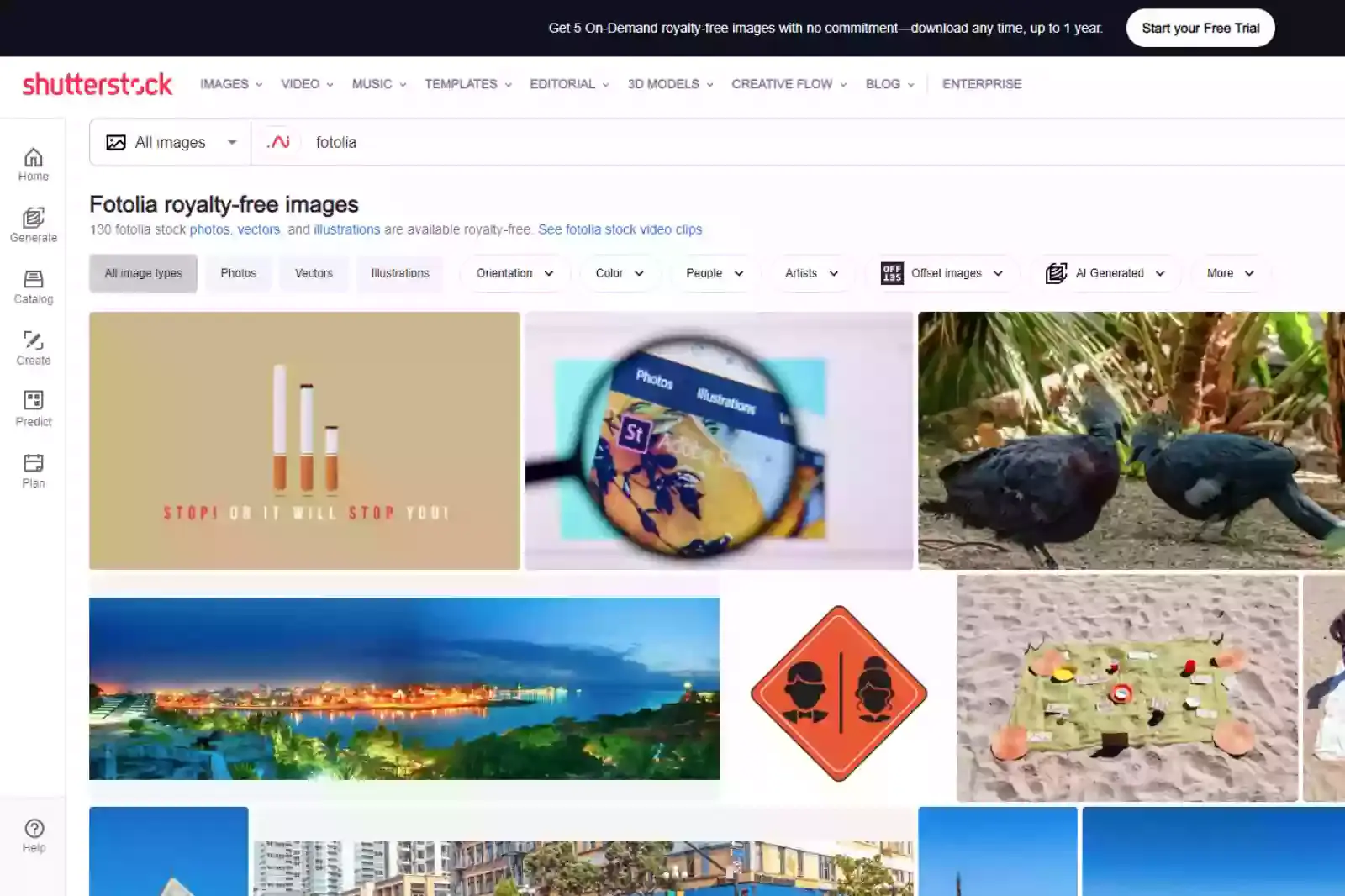
One of my favorite stock photo sites for several years now. The photos tend to be priced fairly well and you can search by subject (if looking for a certain type of shot) but searching by tag yields great results too. Plus there's a huge selection of royalty-free music clips.
We are also thrilled to see a stock photo site finally go mobile, being able to access your library of images from wherever you go is amazing. You can even download them directly onto your phone or tablet so they're ready to use when inspiration strikes.
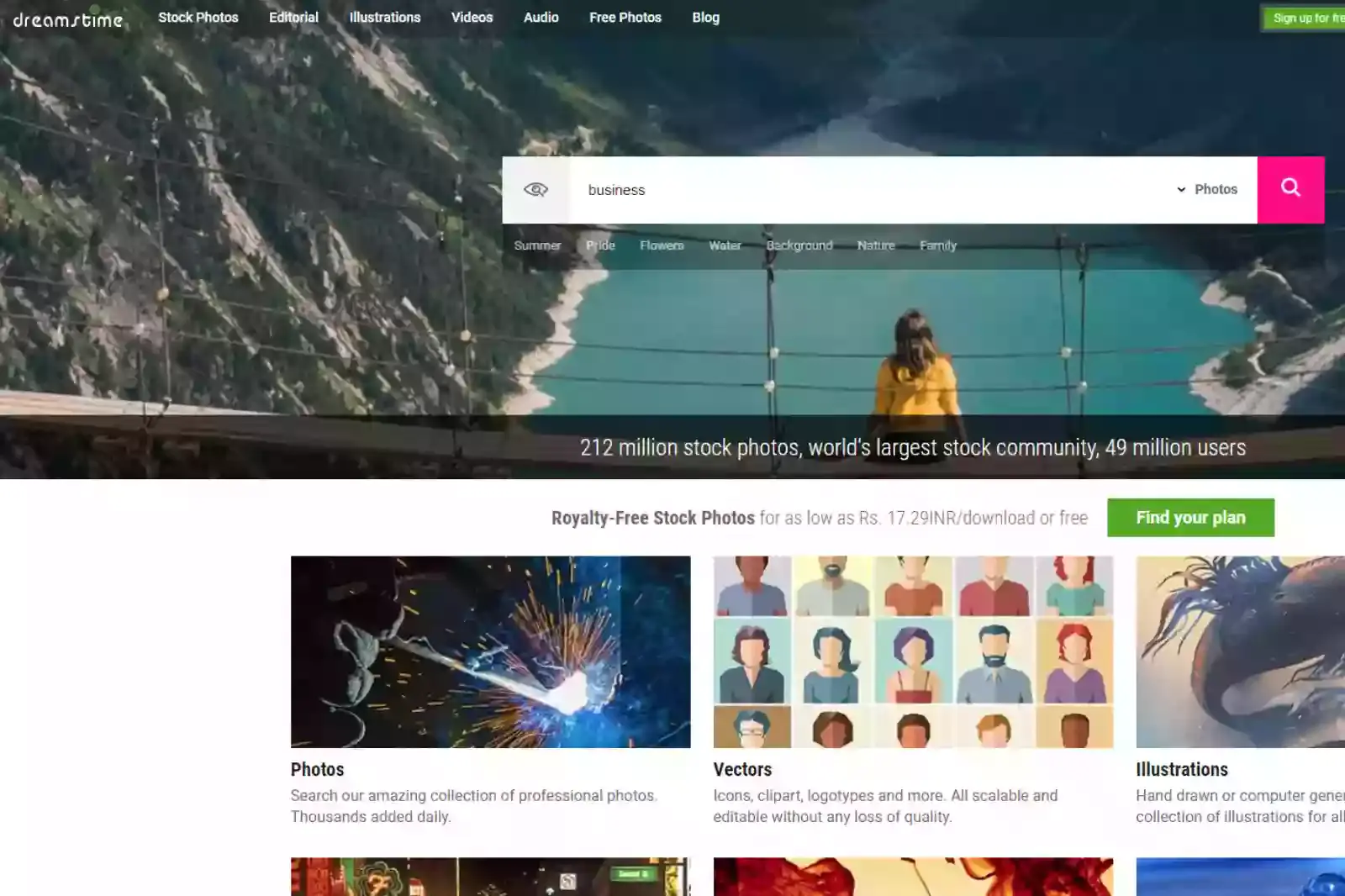
The thing with Dreamstime is that there are a lot of people, so if you want your images seen and sold, it takes patience. Don’t expect money from day one, unless you get very lucky.
If you don’t mind waiting for things to happen though, we suggest just submitting a batch of images each day and hoping for a sale or two (or three!) over time. In my experience, their royalties aren’t bad either.
$0.50-$1 depending on image size & resolution +20% after 12 months! Not too shabby if you have high-quality professional photos to submit that fit within their categories.

If you are looking for photos, Canva is an online photo editing tool that has a large number of free images. You can upload your own, or browse through their collection of stock images and even add text if needed. If you’re not planning on selling any products or making money off of your photos, Canva is a great option for you.
The only downside? After using a certain image for a while in an electronic file (like in an ebook), there may be issues with other programs recognizing it. Canvas offers unlimited downloads on most of their stock photos so if you find something you like, make sure to download it so that it can work with other programs down the road.
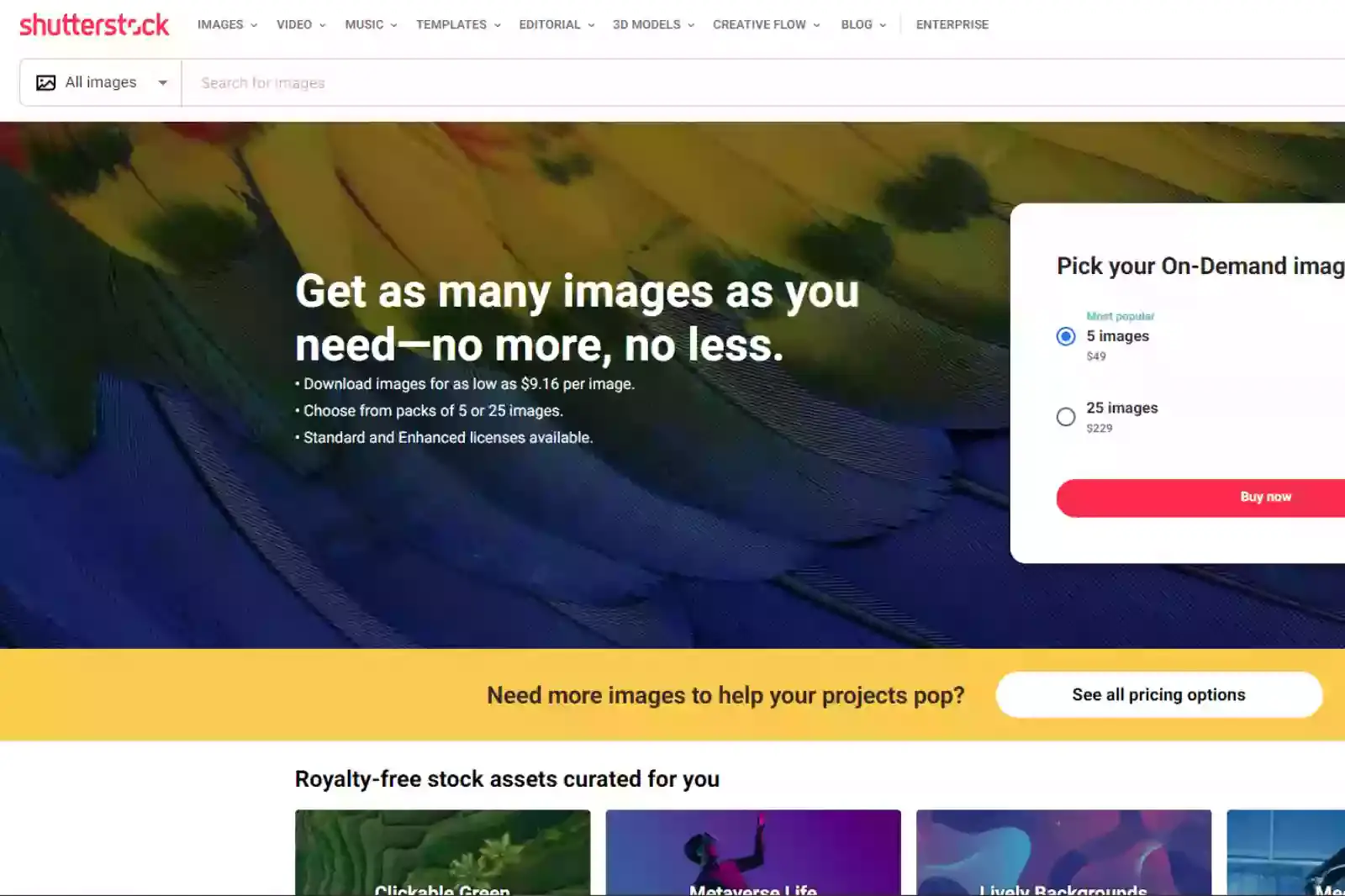
There’s no doubt about it: Shutterstock is a fantastic resource for premium stock photos. Their photographers also do a great job of being well-organized by keyword and type, meaning you can be confident in your photo search.
That being said, sometimes you might find what you’re looking for on Shutterstock, and other times you might not. Plus, there are several good alternatives available to you. Unsplash:
This site (which was named one of Time magazine's 50 best websites of 2013) boasts high-quality images that can be used without attribution. Shot with real cameras by real people around the world, these photos add personality and life to your projects in ways many other sites don't come close to doing as well.

Adobe Spark has got a lot of attention lately for being a photo editor. Its basic function is to let users make edits and manipulate images, but it can also be used to create content on its own.
By using one of Spark's templates, you can pull in your photos, edit them, add text or graphics (depending on which template you use) and even tweak layouts all without publishing it online.
One big perk: Adobe offers lots of free templates that can be accessed through their mobile app available for iOS and Android devices. The option gives users more flexibility when putting together content with photos they already have rather than having to take new ones specifically for each piece they want to create.

Just like Istock and Shutterstock, Pixabay offers a wide range of photography for licensing. But instead of focusing on high-quality photos from professional photographers, Pixabay contains images from amateur as well as professional photographers who share their work freely with other users.
The site even features videos, vector graphics, and illustrations. As you might expect, all of Pixabay’s resources have been released under various Creative Commons licenses. This means most content is free for commercial use and modification, though some resources require attribution.
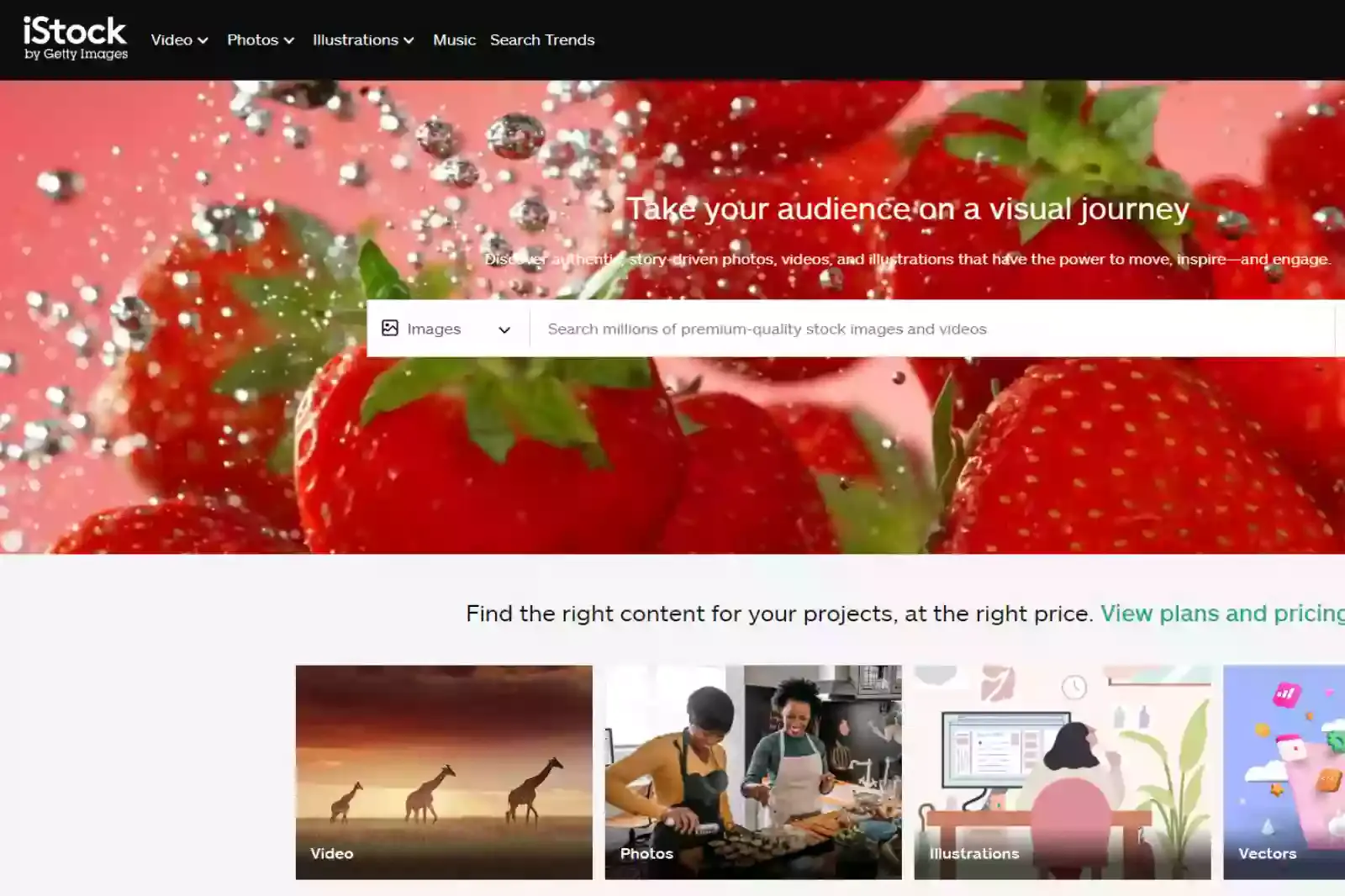
If iStock is your go-to for premium stock photos, give DepositPhotos a try. This site features high-resolution images from amateur and professional photographers who've uploaded their work for free.
Even better? It offers a wide range of sizes, so you don't have to settle for low-res pictures. While we still think iStock is one of the best sites on our list, it isn't necessarily right for everyone, especially those looking for more affordable options.
Your work will speak best if it's represented well, so make sure your images fit your brand image and aesthetic before uploading them here. This will also be important when marketing your products or website later on.
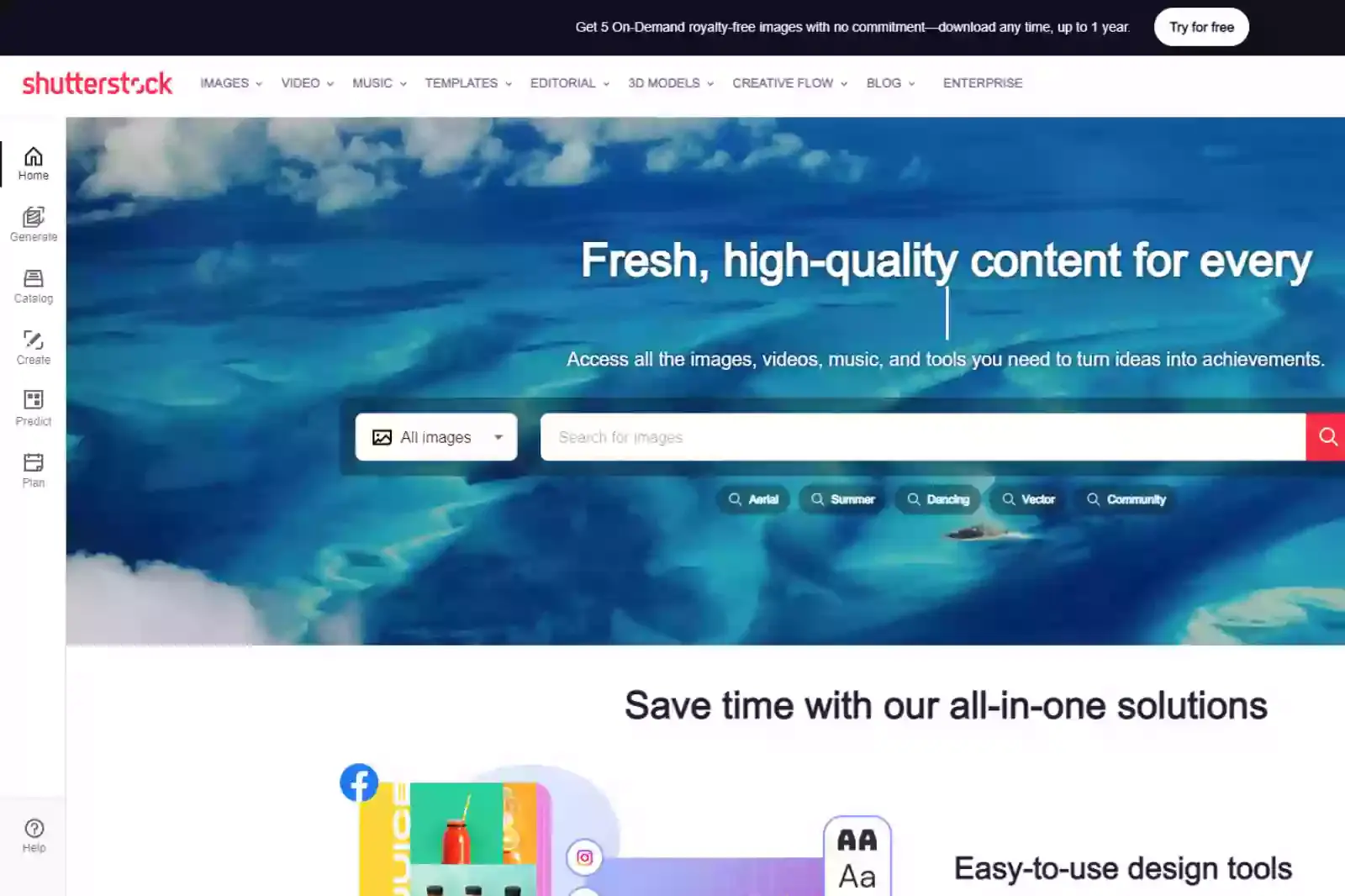
An easy way to find free images is by using a reverse image search engine, like Google's Reverse Image Search. This one tool will do all of your searchings for you, meaning no more sorting through enormous portfolios for free images.
You can also save money by utilizing Shutterstock’s credits program. For $20/month (or $200/year), users get 1 credit per image; each credit costs $250. This means if you purchase 10 images, it would cost a total of $2500. By paying upfront instead, you pay far less in total and get access to a large library of photos.
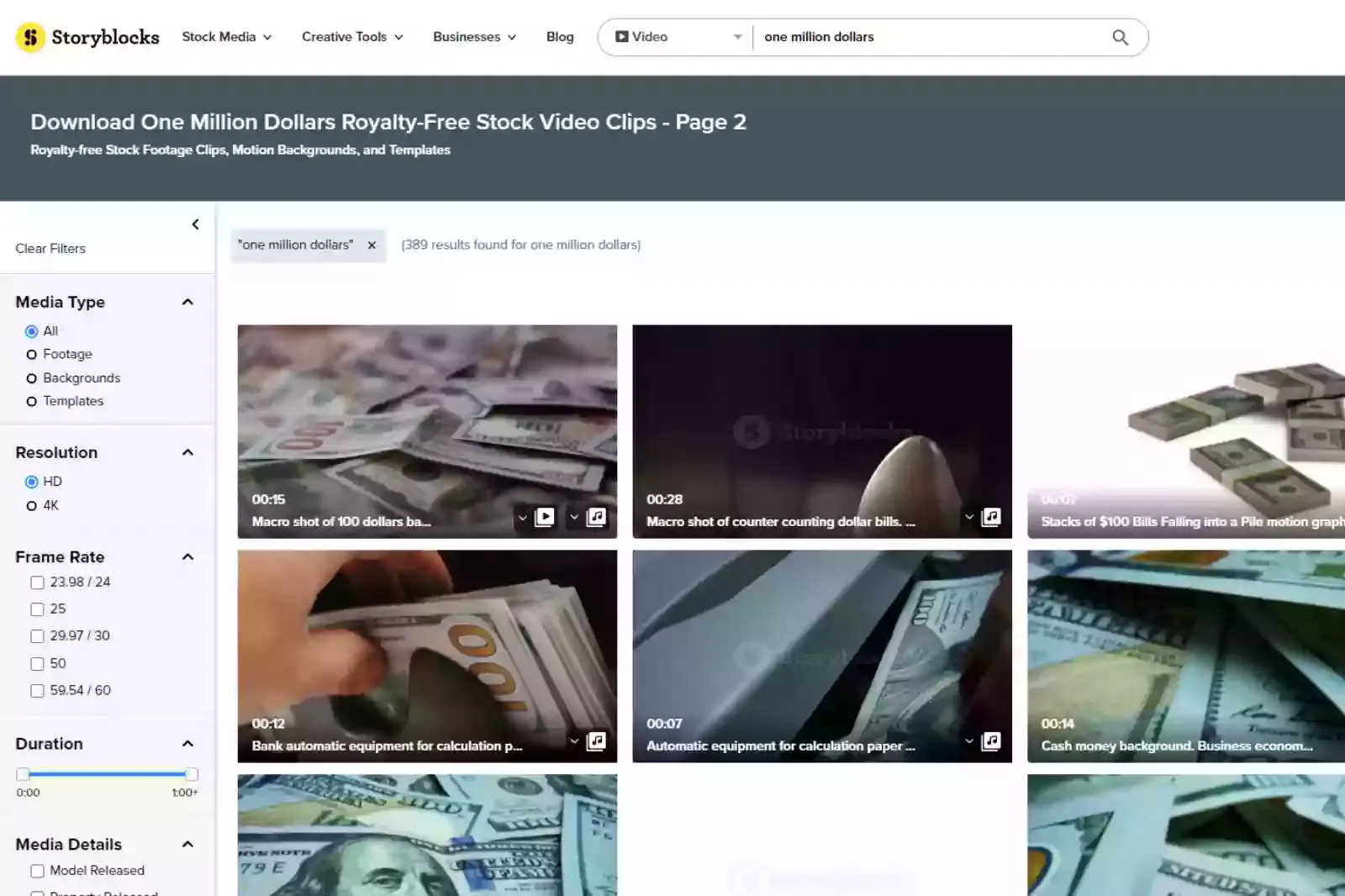
Storyblocks is a set of easy-to-use story templates. With Storyblocks, you can be sure your images will look great because they’re specifically designed for social media. In addition, each template comes with customizable text, so you can add a personal touch.
Despite being free and easy to use, Storyblocks is excellent quality the images look professional and aren’t blurry or pixelated. While there are some free stock photos out there, they often aren’t of very high quality and they don’t always give you as much freedom in how you want to use them.

The internet has grown immensely since its creation and continues to expand daily. With the introduction of image recognition algorithms, it's hard to ignore the necessity of high-quality images in today's society.
They could be your secret weapon when it comes to online visibility. Just like any other part of your business, your images need to be of the utmost quality to reach your target audience effectively and efficiently, no matter what industry you're in. Here are 10 reasons why high-quality images are beneficial to the business overall.
Everyone likes a good image, which is why hiring a professional photographer isn’t just an option it should be mandatory. While hiring a pro can be costly, you have to consider how it will benefit your company in terms of brand recognition and reliability.
Your company is bound to be seen in some type of visual form, whether that's on Facebook, through Twitter, or on Google Image Search.
Just as you would build trust by listing your physical address and contact information on your website or in marketing materials, so too should you ensure that potential clients know exactly who they’re doing business with. You’ll want to appear as reputable as possible if you want people searching for photography services online (from Google Images) or elsewhere.
Whether you’re running a local deli or working for an international investment bank, your online presence is one of your most important marketing tools. High-quality photos can help build trust and increase engagement with prospects, customers, and clients.
Not only will they be more likely to buy from you, but they’ll also tend to recommend your business to their peers as well. In short: a great picture can turn a casual browser into a dedicated client or brand evangelist.
If your audience loves what you post on social media and constantly shares it with their friends and family, chances are you’re going to have a growing following. The more likes, comments, and shares you get, the more attention you'll attract from others who might be interested in what you have to say.
High-quality pictures keep people on your page: There’s nothing worse than uploading an image only for it to look blurry or pixelated. Keep people engaged by making sure everything looks as sharp as possible on social media platforms so that they don't leave your page before reading what you have posted.
If you want your online store, or any of your marketing material, to appear professional and persuasive, then you need high-quality photos.
It’s as simple as that. If potential customers can’t trust what they see in your photos, then they simply won’t buy from you or worse, go out of their way to find another vendor who does have good pictures.
Although it might seem like a lot of work, improving your product photography can help get you noticed and improve sales overall.
It's easy to email a friend or posts an image on your Facebook page. But most people won't go out of their way to save a low-quality image and they won't share them either. However, high-quality photos do catch people's attention, so they're more likely to be shared.
With social media sites like Instagram and Pinterest, high-quality pictures could give your posts that extra push they need to attract potential customers.
It is also important because these are seen as more credible than low-quality ones! So put in some effort and craft your pictures; you might be surprised how effective it can be.
We’ve all heard that first impressions matter and with good reason. When you make a good impression, it helps shape how people feel about your company and products as well as influences how they choose to do business with you.
We may not be aware of it, but our brains process visual information 60,000 faster than text; in fact, we’re hard-wired for image processing.
This means that when you put a lot of effort into making your photos look great, those efforts help create a strong first impression and can lead to higher conversion rates and better customer experiences on your website and social media pages.
Don’t believe us? Think about it for a minute: If you could only choose one of two Instagram accounts, which would you choose? The one with 100 photos that look like they were taken by your uncle with his phone, or a group of 20 photos that could appear in National Geographic.
You probably wouldn’t hesitate for too long. Even if your content is great, bad images make people lose interest quickly. If your pictures aren’t coming out as well as they could be on your phone, consider investing in photography equipment. There are many cheap ways to get pro-quality photos without spending thousands of dollars.
In certain situations, talking may not be an option. For instance, if you’re in a meeting and someone is giving you a presentation, take notes in longhand with a pen or pencil; studies show that speaking while writing helps people retain information better.
And when you see something worth sharing? Snap it with your smartphone or digital camera and post it on social media so others can learn from it too. You might want to think about snapping pics of important documents as well that way, you have them handy if you need them later.
It never hurts to be prepared! Use higher resolution images: You’ve likely heard that we live in a visual world. We process 90 percent of our data visually, meaning how we represent ourselves online matters not just what we say but also how we look through our photos and videos.
People want an idea of who you are before they hire you or buy your product. A video interview allows you to show off your assets and personality in a way a resume can’t.
It will give potential employers (or clients) a better understanding of who they’re dealing with, which should greatly help your chances of getting hired or selling products.
As a bonus, when you get famous from all those interviews, more people will be able to find your profile because it's searchable by name. This is another great step toward building out your online brand.
Getting professional photos for your website and social media marketing is a great way to showcase what you have to offer. Regardless of industry, professional photography will give you an edge over competitors who haven’t taken such a proactive approach.
For example, makeup artists rely on their photos to show potential customers how they can look with new products or techniques. Similarly, interior designers use pictures as a way of showcasing what they can do with rooms and different layouts.
Customers respond well to having a clear vision of how something will look in their home or office, so using high-quality photography goes hand-in-hand with showing off your expertise and professionalism.

The world of graphic design is filled with jargon that can sometimes be hard to understand for anyone new to the field. One such term is the resolution, or the dpi, of an image.
It's important to know what this term means and how you can use it in your work as a graphic designer or just as someone looking to create high-quality graphics of your own. Here are some of the qualities of an image that has high resolution so you can tell if an image will help you achieve your goals in your projects or not.
One of the most important qualities of a high-resolution image is the depth of field. Depth of field refers to how much of an image comes into focus at any given moment, and it's something that separates a high-quality picture from one taken with an old smartphone.
A photograph taken with a quality camera will usually have a higher depth of field than a picture snapped by someone with their phone, for example. You'll notice better clarity and crispness when images are created using more shallow depths of the field.
Unless you’re looking to confuse or mislead your audience, making sure your image is well-composed is crucial. Whether it’s a landscape or portrait shot, every element must serve a purpose.
That doesn’t mean that every inch of your image needs to be directly relevant; in fact, juxtaposition (such as having an unassuming person in a crowd) can make images more striking.
Rather than being overwhelmed by what you have in front of you, look for background details that add visual interest but don't detract from your main subject. Also, make sure you're getting tight shots; wide shots allow for too many distractions that distract from your central subject matter.
When it comes to photography, things don’t always come out as expected. That’s why it’s important to take different shots from different angles. A photographer can take a shot from above or straight on if they want a close-up look at what they're photographing, but if they want an overall view of their subject.
Then taking shots from the further back is ideal. It all depends on what you want people to see when they look at your photo. Taking images from different angles helps ensure that you get everything you need in one shot and will prevent having to retake multiple photos because something wasn't quite right in the first place.
The focal point of a high-resolution photo is key. If there are no props or it’s otherwise empty, you’ll want lots of clean space around your subjects. Conversely, if there are props in the image, make sure they aren't competing with your subject(s) for attention.
If you're using a background color or texture (like rocks or plants) in an image that also includes people, make sure those colors and textures are muted so they don't compete with skin tones. Your images should be simple and impactful so remove anything that could detract from that simplicity.
Depending on your client or publication, you might be limited by space. With that in mind, try to get a variety of shots from one location for additional visual interest. We're talking multiple angles and points of view; not just full-body, waist-up, and close-up shots.
This will make your images easier and quicker to edit, which could mean a faster turnaround time and maybe even better results. Plus, having more than one version of a shot might give you an edge if they need something else at some point down the road.
It'll save them from asking someone else again! If you need help figuring out how many photos you'll need in total, check out our guide on how many images are necessary for social media and beyond.
To take stunning photos you’ll need a quality lens and camera. But, even a new camera or lens won’t guarantee professional-looking photos without a proper grasp of how to use it. So, if you haven’t invested in a new camera/lens yet, don't worry.
You can still take quality images using your current gear it just takes some know-how! Make sure to visit your local photography store for free classes on photo basics, like aperture and shutter speed settings.
Good lighting conditions have a significant impact on a photo’s appearance. Ideally, you want your subject and background properly lit so that they aren’t too bright or too dark. This can be accomplished with artificial lighting (e.g., light boxes) or through natural light in your outdoor photos.
With any luck, it won’t be necessary for you to do much post-processing of your images but if editing is necessary, it’s best to start with the high quality source material.
Compression is one of those things that you don't think about unless it's a problem, but when it comes to image size, it can make a big difference. There are several different types of compression methods, some are lossless and some are lossy.
Which type you should choose is dependent on your needs and how much you’re trying to accomplish with each photo. For high-resolution images for printing, use a lossless method like rar or zip. These will save up to 10x as much space over using JPEG compression.
Grainy photos can be distracting, but good high-resolution images are typically taken with a camera that employs a low-noise sensor. When shopping for an image, look for those that appear clean and crisp.
A little bit of noise or grain may be expected with some photos (such as in black and white photography), but if it’s noticeable without zooming in or viewing large, you may want to choose a different image.
If you have Photoshop available, try running your photo through Neat Image noise reduction software; it helps remove unwanted graininess while retaining edges in images.
Images and videos play a big role in modern-day content marketing, and they can be very powerful if they are optimized properly. Optimization can be difficult and tedious, though, especially when you're managing large amounts of images (think thousands).
To help you get started with optimizing your images, we've compiled a list of 10 reasons why it's necessary to do so. By the end of this post, you should have all the information you need to get started with image optimization today!
Good content is a great start, but you'll want to take additional steps to make sure people can see your posts. For example, if you have a popular social media account, consider sharing it on those channels. You may also want to add clickable social sharing buttons to your post so that readers can easily share with their networks.
If you’re blogging on your business website, think about adding a section for popular posts so that people have an easy way of seeing what’s already resonated with readers in the past. As you write new posts over time, keep in mind which ones might be worth highlighting for social shares down the road.
It’s All About User Experience, a faster website provides a better user experience. This includes images as well. The faster your pages load and that includes images and other media content the more positive your site visitors will be about your site.
A few seconds may not seem like a lot of time to you, but for people on mobile devices with limited data plans, every second counts when it comes to using your site or app. And when those users walk away because of slow page loads? You could very well lose customers and prospective customers forever.
Images are a natural fit for search engines. Search crawlers can't see text or hear audio, but they can read images, which means you can use them to get your content indexed by search engines without having to resort to the explicit inclusion of links.
If a search engine knows what's inside an image and sees it linked from other pages on your site, it will send traffic accordingly. One way to improve your chances of ranking is to have good alt-text on all images; these words appear if an image cannot be displayed for some reason.
Content is king. It's no secret that people are drawn to compelling content, and studies have shown that compelling visuals can help make your content more memorable.
According to Content Marketing Institute, content including images receives 94% more views than content without. That's a lot of extra eyes on your work. With an eye for design and strong attention to detail, image optimization will enhance your overall user experience. This could be just what you need for higher conversion rates!
Whether you’re selling something, trying to educate readers, or attempting to incite action, trust is one of those elements that simply can’t be overlooked. If you want readers to take any type of content seriously (and they should!), they need to trust that your information is accurate and unbiased.
This is true whether you’re writing an opend piece, a how-to guide, or anything else. It’s just part of being a responsible communicator. To build that sense of trust with your audience, start by including citations and resources when possible so readers know where their information is coming from.
Images are powerful. Not only can they help attract new customers, but they can also be used to retain your existing ones. On social media, images with brand logos and other content enjoy a 2% engagement rate, while text-only updates only get a 0.1% response rate.
On top of that, 90% of consumers say visuals have an impact on their purchasing decisions – and 66% of users expect businesses to publish visual content weekly.
On WordPress, your images are stored in their directory. These images are accessible through an outside URL (which is what makes them external content). In other words, anyone can access these external images without needing to log into WordPress.
While you've hopefully set a password to protect your site (along with other security measures), that doesn't stop someone from going directly to your website and looking at all of your images. Visitors can save these images and use them for their purposes.
For example, if you were using an image of a product as part of a sales page, someone else could steal it and post it on their site or eBay—without giving you any credit or remuneration for that use.
There's a growing trend among digital marketers toward optimizing images for use in various online campaigns. Advertisements on social media, websites, and display ads can be highly effective when used correctly.
With that said, it's important to realize that not all images are created equal. Some visuals may hurt your campaign if they aren't optimized correctly.
Research shows that 52 percent of global Internet users leave websites because of low-quality photos so it’s time to make sure you have high-quality images on your sites. Here's how you should go about doing so.
While it might be tempting to keep large, high-resolution images in your website design, you need to remember that these are loaded on every single page along with text and other assets.
The more you weigh your pages down with large images (and sound and video files), the slower they will load. The key is to use media that matches your site’s content and doesn’t take a toll on loading times.
Images should be optimized so they display well without slowing down your pages and improving navigation on mobile devices by using CSS media queries. Even if an image isn't displayed when viewed on a mobile device, it could still be downloaded if not properly optimized.
It’s not a matter of if you should optimize images, but how. Chances are that when most people hear about image optimization, they think about all those extra steps it will take to get their photos just right.
But here’s why optimizing your site’s images should be high on your list of priorities: optimized images load faster, which leads to an increase in page views and engagement time.
And while we’re talking business, traffic and leads are important how else are you going to make money? It just makes sense to optimize your site for visitors; after all, isn’t that what marketing is all about?
Images are an important part of most website designs, as they can help you display relevant information to your visitors and give them an idea of what you’re all about right off the bat. However, depending on how large your image files are, they could also be weighing down your site and making it slower to load than necessary.
In addition, if you're not including image optimization services in your web design package, they may make search engines think that the content of your page isn't original or unique enough, which could hurt your search engine optimization efforts in the long run.
Upscale.media is a paid service that lets you add photo effects and graphics to your website without ever having to touch Photoshop (or another image editing tool). Simply select a template, click on images or objects you’d like to include, then make changes as needed before downloading it all it couldn’t be easier.
Upscale will give you a preview before delivering your final project, which will be accessible via an online URL link that remains private only for as long as you use their service. The best part? You don't need any special skills to get started using it; no experience with design programs is needed.
Do you know how to improve your website? If you’re like most people, your answer will be no, but that doesn’t have to be the case. To improve your website, one of the best things you can do is optimize your images so they look good and load quickly in whatever browser someone might be using to view them.
This way, your site will look clean and professional no matter what device someone uses to access it. To learn more about how this works, check out these 10 reasons to use Upscale.media for image optimization.
A lot of businesses will stuff as many keywords in a page title or description as they can fit into a line. However, it's better to avoid keyword stuffing and simply let your text flow naturally. It's not all about SEO you want people who aren't trying to find you online to be able to read what you wrote, too.
If you have too much SEO-focused content on your site, it might start driving away non-customers because they won't want to deal with an overly-optimized site and instead will go somewhere else that is more user-friendly.
SEO companies often promise SEO results, but when you look at their guarantees they’re full of legalese and are structured in a way that makes it almost impossible to collect on them if something goes wrong. At upscale, we offer a $100 guarantee which is straightforward.
If we don't get your website ranking at least on page 1 in 3 months you get $100 off any services for 12 months (that's our business model) plus an extra month free with any package purchased within that year of service from date of approval (if there is no approval date written then use the first day of service).
This guarantee applies only to non-local searches from your city and state or country, meaning there are no restrictions on markets served other than those listed.
Because we're on Facebook, Twitter, and Instagram all communities that use organic traffic as a ranking signal your images will be seen by thousands of people on social media every time you post them.
We've already built up hundreds of thousands of followers with our own accounts, so whenever you post something new it'll be seen instantly by tons of people who love and share great images. This way we can guarantee big exposure while still remaining within your budget.
These social media accounts also help grow your brand awareness and give visitors additional ways to follow you or learn more about your business when they're not ready to commit just yet. So what are you waiting for? Sign up today.
In recent years, online shoppers have been conditioned to look for products and services with a large number of social media likes as proof that other people approve of them.
At upscale.media We know how valuable likes and shares are to your business, so we ensure each image our customers submit gets noticed on Facebook and Instagram (when applicable). The result is an impressive amount of engagement without you needing to lift a finger or spend any money on advertising.
Our unique system grants up to 100% more likes per picture than using just your current page's fans; no matter where you place them in your galleries, images will be viewed by thousands or even tens of thousands.
Upscale.media guarantees your content will be seen by thousands of targeted visitors, making it possible to achieve page-one results and outrank your competitors on Google, Bing, and Yahoo.
With its keyword-targeted keyword replacement image optimization technology, Upscale.media finds words and phrases that you want users to read more about in your images, replacing them with related words and phrases from other articles on your website.
This allows users who are searching for these keywords to discover new content on your site even if it wasn’t directly linked from another page.
Image optimization is a process through which you can resize and optimize your images so that they are properly displayed across various digital devices without any loss of quality or clarity.
You don't have to be an expert in code or graphics editing programs, but if you know how to use a computer and have basic knowledge of image programs like Photoshop or GIMP, then using our services will be as easy as following simple instructions.
Our team of experts can take care of everything else. So why not up-scale your media today? Simply contact us here and we'll get right back to you with a personalized solution tailored specifically for you! You've got nothing to lose, except those ugly images on your website. And that's something we all want to avoid!
If you want your images to perform well on social media, or gain traction when they’re featured on websites, you need an image optimization service that caters specifically to those outlets.
Of course, there are many tools available online that can help you make sure your photos look great in any browser. But knowing how image size and format will perform across popular networks like Facebook and Instagram is a different story entirely.
And that's where upscale comes in; we know how each of these sites works (and how they work differently) so we can optimize every photo based on its intended audience or distribution channel. In fact, if you have anything from photos of the office staff at work to before-and-after transformations, check out our website today!
You want your website to succeed and generate as much traffic as possible from online search engines. To do that, you'll need high-quality, keyword-optimized images for each page of your website. Unfortunately, many website owners don't realize that search engines pay extra attention to higher-quality photos.
Additionally, Google's new Hummingbird update will give greater priority to media-heavy websites in search engine results! By optimizing your images with upscale.media before uploading them, you'll be able to significantly improve their SEO value and increase your online exposure even more.
Although investing in high-quality images can cost a bit more upfront, you’ll see great results on your ROI. Images are important to grab users' attention and get them clicking through to your site or landing page so why would you want low-quality images with tons of compression artifacts?
If you want real results, then upscale those JPEGs and PNGs! Upgrading to a premium image will make all of your online marketing efforts look more polished and professional, which will help drive more conversions. As an added bonus, images that have been optimized for display on retina screens also load faster which improves UX and user experience!
If you're running a business, chances are good that you have lots of projects on your plate, whether it's work or play-related (or both). What if there was a way to add an hour a week or more to your schedule without adding stress?
That's what image optimization is all about it will allow you more time for other projects by eliminating some of these daily tasks. What would you do with extra hours in your week?
A DIY photo editor. This can help you do even more with stock photos, such as making them better (or wackier) than they were when you got them. You won't have as many options here, but there are also fewer distractions and much less user-generated content to sort through.
For example, if you want a professional-looking high-quality photo of two men in suits shaking hands in front of their skyscraper office buildings, check out Upscale.media. ( it contains 4K images of up-to-date images that will take your website visuals to another level ).
When it comes to websites, stock photos make an immediate impact on visitors, both in terms of visual appeal and professionalism. Unfortunately, sometimes the expensive price tags of sites like Upscale Stock Photos can be too much to handle.
They may not be within your budget or you may simply feel that paying per image isn’t worth the investment. Fortunately, there are several other stock photography sites out there offering similar services at prices that won’t break the bank and some even include free options.
Upscale and enhance images resolution on the go with just a few clicks! Here is our curated selection of top file types for upscale.media.
How much does Bigjpg cost?
It depends on how many photos you want per month: $2.49 gets you 10 images each month; $7.99 gets you 60; and so on, up to $39.99 for unlimited downloads per month.
What is the best free image Upscaler?
Free stock images are great, but sometimes they’re just not good enough. If you have a big project on your hands, free stock photos aren’t always going to cut it because they typically have low-res files, have been heavily compressed, or simply aren’t a good fit for your needs.
What is the best photo enhancer?
There are a number of image-enhancing applications out there that help you spruce up your photos, but which is best? We take a look at some of our favorite photo enhancers to help you find out how and where to use them.
Is upscale.media suitable for professional use?
Yes, upscale.media is suitable for professional use, with advanced features like batch processing, API integration, and custom model training available for businesses and enterprises.
How much does upscale.media cost?
Upscale.media offers a range of pricing options depending on your needs, from pay-as-you-go to monthly subscriptions. You can check out their pricing page for more details.
Is upscale.media easy to use?
Yes, upscale.media is designed to be user-friendly, with a simple and intuitive interface that makes it easy to upload and upscale images.
You can upscale images of anything like objects, humans, or animals , and download them in any format for free.
With Upscale.media, you can easily remove the background of your images by using the Drag and Drop feature or click on “Upload.”
Upscale.media can be accessed on multiple platforms like Windows, Mac, iOS, and Android.
Upscale.media can be used for personal and professional use. Use tool for your collages, website projects, product photography, etc.
Upscale.media has an AI that processes your image accurately and upscales the image automatically upto 4X.
You won’t have to spend extra money or time on the purchase of expensive software to enhance your images.
Every week, we send you one article that will help you stay informed about the latest AI developments in Business, Product, and Design